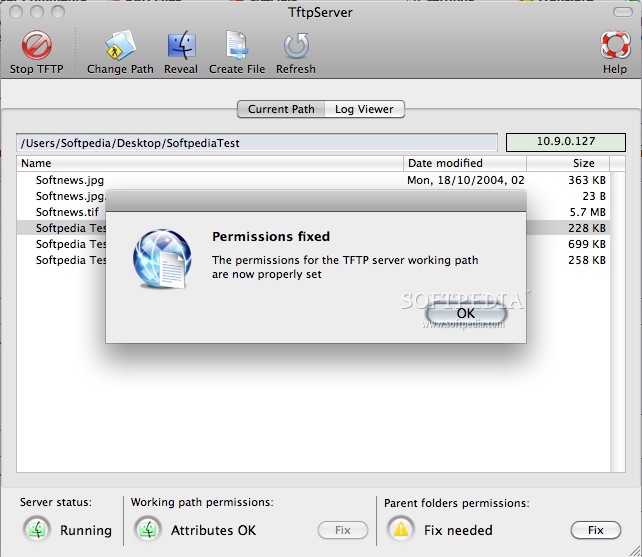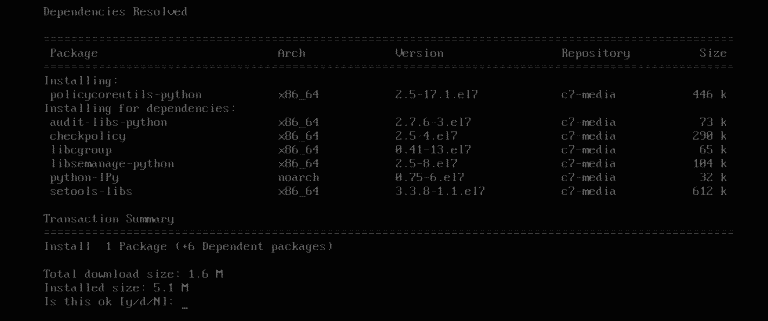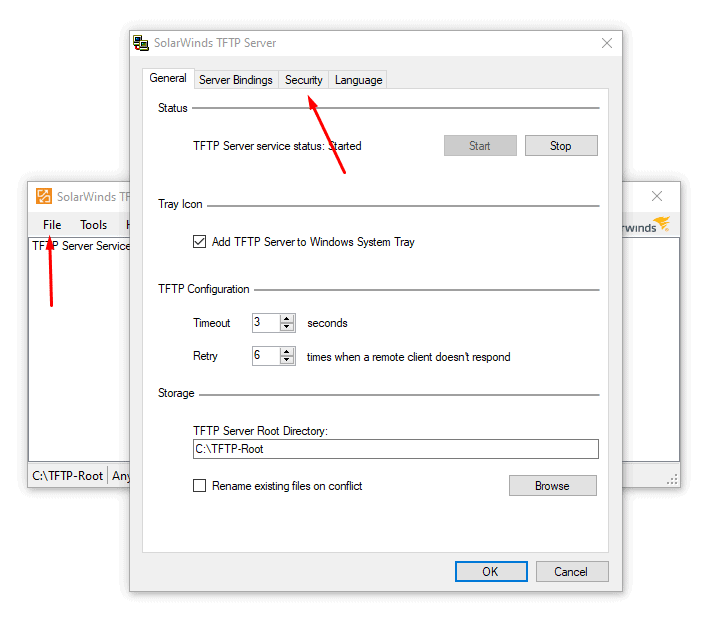

- ENABLE TFTPSERVER ANONYMOUS HOW TO
- ENABLE TFTPSERVER ANONYMOUS INSTALL
- ENABLE TFTPSERVER ANONYMOUS WINDOWS 8
- ENABLE TFTPSERVER ANONYMOUS DOWNLOAD
- ENABLE TFTPSERVER ANONYMOUS WINDOWS
By default, FTP sites and clients use port 21. On the second page of the Add FTP Site wizard:Ĭhoose an IP address for your FTP site from the IP Address drop-down, or choose to accept the default selection of "All Unassigned."Įnter the TCP/IP port for the FTP site in the Port box. When you have completed these items, click Next. For example, you can use "% SystemDrive%\inetpub\ftproot" for your content directory. Note that if you choose to type the path, you can use environment variables in your paths.
ENABLE TFTPSERVER ANONYMOUS HOW TO
How to use the FTP Site Wizard to Create an FTP Site with Anonymous Read Access In the Actions pane, click Enable to enable Anonymous authentication or click Disable to disable Anonymous authentication. On the FTP Authentication page, select Anonymous Authentication. In the site's Home pane, double-click the FTP Authentication feature. In the Connections pane, expand the server name, expand the Sites node, and then click the name of the site.

ENABLE TFTPSERVER ANONYMOUS WINDOWS
If you are using Windows Vista or Windows 7: On the taskbar, click Start, point to Administrative Tools, and then click Internet Information Services (IIS) Manager.If you are using Windows Server 2008 or Windows Server 2008 R2: Click Administrative Tools, and then double-click Internet Information Services (IIS) Manager.Hold down the Windows key, press the letter X, and then click Control Panel.
ENABLE TFTPSERVER ANONYMOUS WINDOWS 8
If you are using Windows 8 or Windows 8.1:
ENABLE TFTPSERVER ANONYMOUS INSTALL
To support ASP.Membership authentication or IIS Manager authentication for the FTP service, you will also need to select FTP Extensibility.ĭownload the installation package from the following URL:įollow the instructions in the following walkthrough to install the FTP service: The element and its child elements replace the IIS 6.0 FTP settings that were located in the LM/MSFTPSVC metabase path.
ENABLE TFTPSERVER ANONYMOUS DOWNLOAD
The element of the element was introduced in FTP 7.0, which was a separate download for IIS 7.0.

The element of the element ships as a feature of IIS 7.5. The element was not modified in IIS 10.0. This form of authentication allows access to an FTP site without a user account on your server or domain, and is most often used for public FTP sites.Īnonymous users will typically log in by using a user name of ftp or anonymous, and most users will use their e-mail address as a password, although this is not required. If you create an empty file with the same name and edit its access rights, the above upload process will be successful.The element specifies the settings for anonymous access. In other words, it is not possible to upload a file that does not exist on the TFTP server via TFTP clients.

TFTP requires that a file with the same name should be in the directory where the file will be written as a prerequisite for a file upload and that the write access for this file should be available to everyone. The problem here is because of some security procedures on the TFTP server. Since the error message returned is not self-explanatory, it is difficult to understand what the real problem is. 100Īlthough the above command is correct, you will get an error while transferring the file to your TFTP server. To send a sample file to the TFTP server, you need to use a command like this: busybox tftp -l example. To use the TFTP client application, issue the busybox tftp command: busybox tftp In such cases, since the TFTP client will probably be compiled in busybox, you can send a file saved in the system to a TFTP server on a network.


 0 kommentar(er)
0 kommentar(er)
